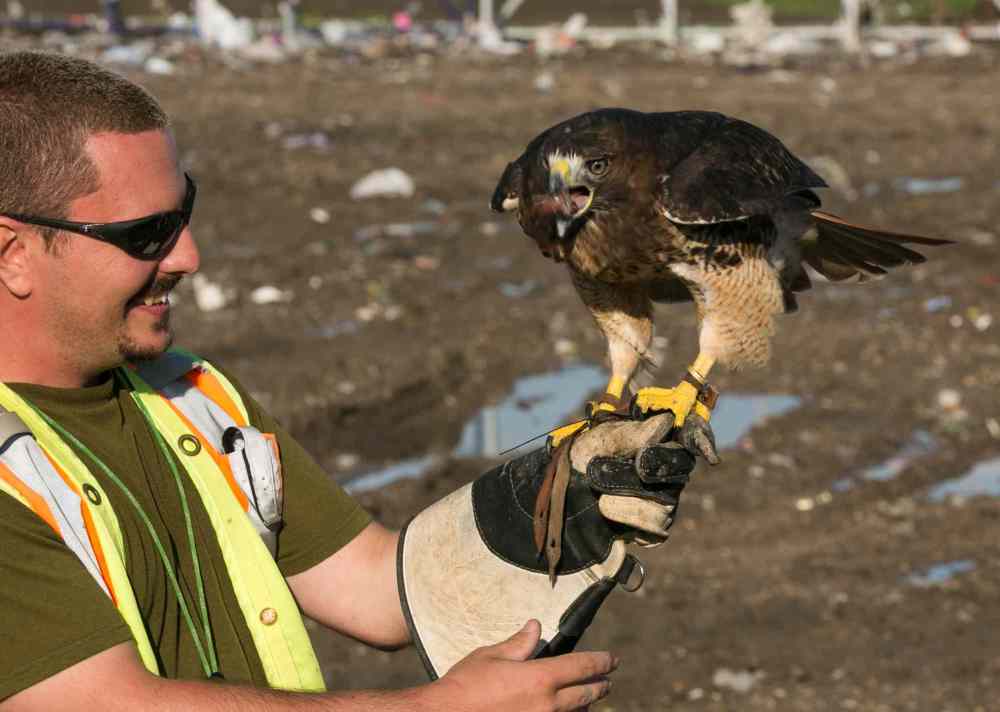Winnipeg employs falcons and hawks to chase off gulls at Brady landfill
Birds of prey help keep gulls away from machine operators
Advertisement
Read this article for free:
or
Already have an account? Log in here »
To continue reading, please subscribe:
Monthly Digital Subscription
$1 per week for 24 weeks*
- Enjoy unlimited reading on winnipegfreepress.com
- Read the E-Edition, our digital replica newspaper
- Access News Break, our award-winning app
- Play interactive puzzles
*Billed as $4.00 plus GST every four weeks. After 24 weeks, price increases to the regular rate of $19.00 plus GST every four weeks. Offer available to new and qualified returning subscribers only. Cancel any time.
Monthly Digital Subscription
$4.75/week*
- Enjoy unlimited reading on winnipegfreepress.com
- Read the E-Edition, our digital replica newspaper
- Access News Break, our award-winning app
- Play interactive puzzles
*Billed as $19 plus GST every four weeks. Cancel any time.
To continue reading, please subscribe:
Add Winnipeg Free Press access to your Brandon Sun subscription for only
$1 for the first 4 weeks*
*$1 will be added to your next bill. After your 4 weeks access is complete your rate will increase by $0.00 a X percent off the regular rate.
Read unlimited articles for free today:
or
Already have an account? Log in here »
Hey there, time traveller!
This article was published 12/07/2014 (4081 days ago), so information in it may no longer be current.
At one of the smelliest places in Winnipeg, that people only visit when they have to, two ’employees’ are eager to begin their shifts.
For Spitfire, a gyr barbary falcon, and Fiat, a red-tailed hawk, along with their handlers Jordan Janisse and Darryl Klippenstein, the job is simple — chase off gulls.
Klippenstein hops out of the SUV, lifts the trunk door and pulls out Spitfire, who is wearing a small leather hood that keeps him calm for the car ride.
“Falcons are more nervous and twitchy and high-strung because they have so much information coming in through their eyes,” Klippenstein explains.
He removes the hood, unclips the string attached to Spitfire’s leg and lifts his leather glove to the sky. The bird hesitates for a moment and then opens his wings and takes off, leaving a white spray behind him.
“They usually poop before they fly,” Janisse laughs. “So he’s ready to go.”
On this morning, a couple hundred gulls gobble garbage in the residential refuse area as bulldozers move the piles. The handlers work where the machines are because gulls are attracted to the warm, unearthed waste.
Spitfire flies out of sight into the garbage pit and the gulls instantly react. They lift off the trash, moving in unison to the far end of the pile.
Four years ago, the Brady Landfill partnered with Vancouver Island-based company Pacific Northwest Raptors, using birds of prey to reduce the growing population of gulls and geese that were breeding and feeding in the garbage piles.
Machine operators were having trouble seeing out their windshields because of the concentrated mass of birds. And sprawling suburbs on the city’s southern edge, such as Waverley West, expanded in the direction of the landfill, raising public-health concerns.
“The city has continued the program to protect against contamination as well as maintain a certain safety standard,” says Duy Doan, the environmental projects technologist for solid waste services at the city. “It makes it safer for both the truck drivers and the operators.”
The program costs $157,040 a year. Since joining the program three years ago, Janisse has seen the number of gulls decrease dramatically — from more than 10,000 birds to only a couple hundred. All the geese have left.
On windy days, gulls can float for hours without getting tired, making it more challenging to get rid of them. But the falcon’s presence has agitated them, and they stay off the garbage.
Three different kinds of gulls plague the landfill, depending on the time of year. Staff recently began charting the seasonal migration patterns so they know which birds to expect and when.
Franklin’s gulls, the current culprits, are particularly persistent, Janisse says. The black-headed birds are native to the Prairies and nest in large numbers.
Three handlers patrol the dump from mid-April until the gulls migrate south in early November. Staff split shifts in the summer so they can patrol from 5 a.m. until 8:30 p.m. during the week and 9 a.m. to 5 p.m. on weekends. Two people patrol different areas of the site. One flies a bird, while the other cracks a whip or fires the starter pistol — other gull deterrents.
Janisse swings the lure now, a hunk of quail meat on a string, and blows his whistle once — signalling Spitfire to chase the meat, which simulates a hunt.
Falcons are the fastest creature on Earth and could easily catch a gull but, because gulls are full of garbage, the trainers encourage the birds to chase the lure.
“It’s good for them; it’s like falcon aerobics,” says Klippenstein.

Each bird flies anywhere between 10 minutes to a couple of hours, depending on the number of gulls out and the weather.
Today’s flight is short because the birds could be carried away in the heavy wind. Janisse blows the whistle again, this time twice, calling the raptor in. Spitfire torpedoes towards the lure, latching onto the swinging quail meat.
The next bird to patrol is Fiat. Like other female hawks, she’s 30 per cent larger than the males. Standing across from each other, the two handlers fly Fiat back and forth from glove to glove. They’re training her because this is her first week.
Before the birds of prey program began, there was no strategy for removing gulls at the landfill. Sometimes, wild falcons swooped in and chased the birds, but their presence was inconsistent. Maintaining a steady presence is key.
“Eventually they’ll believe the bird has vacated the area if we’re not out here and they’ll come back,” says Klippenstein.


